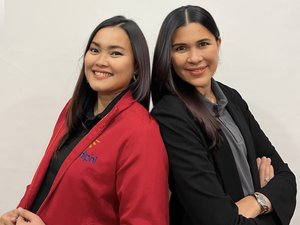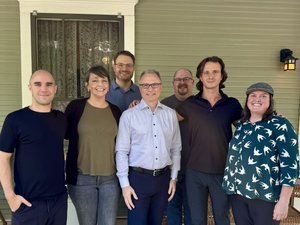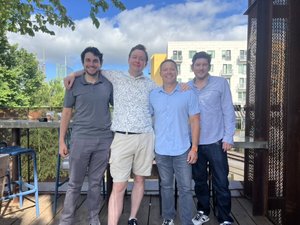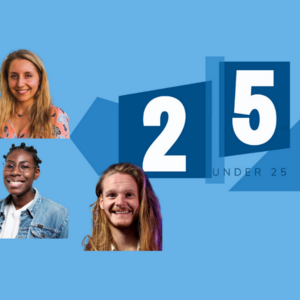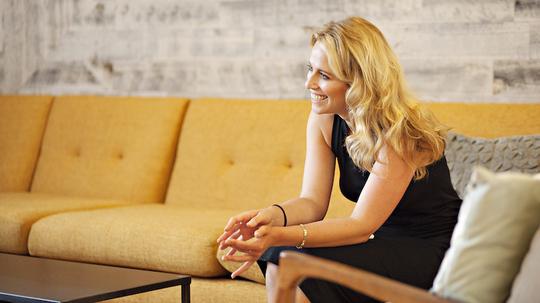
When it comes to startup pitch competitions, there are stages large and small. Austin native Sara Rodell recently pitched on one of the biggest stages at Salesforce's Dreampitch event during Dreamforce 2017, a livestreamed event with 171,000 registered attendees.
Rodell is the founder of Loop & Tie, a gifting platform that has worked with clients including the San Francisco 49ers and Visa. Since launching in 2012, her startup has gained the backing of high profile investors, including Steve Case, and captured the attention of major media outlets, like Forbes.
We recently caught up with Rodell over email to learn how she prepared for the big day -- and what fellow tech startups might learn from her experience.
And, a friendly spoiler alert: Loop & Tie won over the judges and took First Place in the competition, which was accompanied by a $250,000 investment from Salesforce Ventures.
AI: How did you craft your pitch?
Rodell: Crafting the pitch for the Dreamforce competition was a reductive exercise, I wanted to get to a point where every part of the presentation was high impact without being overly detailed. And as a pretty wordy person, this is really challenging for me!
I start by creating an outline of the key ideas I want to leave my audience with and then put stories around each of those ideas. I try on a lot of different styles to see what fits. No matter how many presentations I’ve done, this part is always really time consuming, and frankly, exhausting. But it’s a part of the process and the more I do this, the more patience I have.
After I create a strawman version of the pitch, I get input from people I respect with varying styles. The feedback piece is always a tough one because you need to be open enough to receive feedback, while also having the confidence to own your own stance.
There’s a very real risk of too many cooks in the kitchen when it comes to creating a narrative, and, if you listen to everyone, the result is a Frankenstein-esque narrative without a consistent message. I like getting feedback from people with different communication styles because it causes me to think in new ways and put my own spin on their ideas.
I think the most important part of an effective pitch is its authenticity. I know personally if I try to present something that isn’t written in my voice, the passion for what I do won’t come through. Good pitches are stories that are relatable and sensible. Your audience needs to clearly see how they could use the idea you’re pitching and adopting your idea shouldn’t feel hard.
The last step is translating the narrative into images for the deck. My preference is to put very few words on a deck -- I want people listening to what I’m saying not reading slides. I think the best slides show what would take too long to tell, which is usually the litmus test I use for deciding on slide content. For example, when I show an image of our gift dashboard, people see that we show a level of data and detail that they don’t get with any other gifting service. It’s more impactful to show them this image than to describe the different components.
Product images are also more effective than narrative in achieving the pitch goals I mentioned earlier of being relatable and sensible. Showing the audience the thing they’ll use, helps them very easily imagine themselves as the user. Images are also more helpful with credentialing than speaking is. If I rattle off a list of companies who use us, people stop listening. I find that if I show a slide with logos that are familiar, the audience draws their own conclusion, and it’s much stronger than me telling them anything.
AI: How did you prepare for the stage?
Rodell: I have a very specific process I’ve honed over the many presentations I’ve been fortunate enough to do. Here’s how I prepare:
- I get my narrative to a place where each idea and sentence builds on the next, so there’s a clear logical flow. Since I’ve spent so much time getting to that point, the ideas I’ve penned and the reason why I’ve ordered them is very natural for my thinking and speaking patterns.
- I record myself speaking the narrative in my voice memos on my phone. Whenever I’m walking somewhere, I listen to it and internalize it.
- Then I build slide-by-slide presenting to myself, I don’t advance to the next slide until I’m comfortable with how I communicate the one before it. I don’t memorize a script. I probably would if I could, but I’m terrible at memorizing things, much better at ad-libbing, so long as I have a tight idea of the point I’m trying to get across.
- Once I’ve loosely internalized the narrative, I practice the presentation out loud while doing other things that could distract me. It’s my weird way of making sure I know the content cold. I talk to myself while cleaning my apartment, or packing. My apartment usually looks great once I’ve finally nailed the presentation!
AI: What’s next for Loop & Tie?
Rodell: Growth! We’re at an exciting tipping point where we have strong inbound interest from customers who have read about us, received a gift, or heard about us through a friend.
The 4th quarter is always a busy time for us where stress levels and excitement both run high. On the back of our Salesforce win, we’re excited to build native gifting applications for the Salesforce ecosystem and continually improve our customer experience so that gifting is a low effort, high impact customer interaction.
ABOUT SARA RODELL: Austin native Sara Rodell is the CEO and founder of Loop & Tie, a gift choice platform that lets businesses treat their customers to choices of unique gifts from makers around the US.
